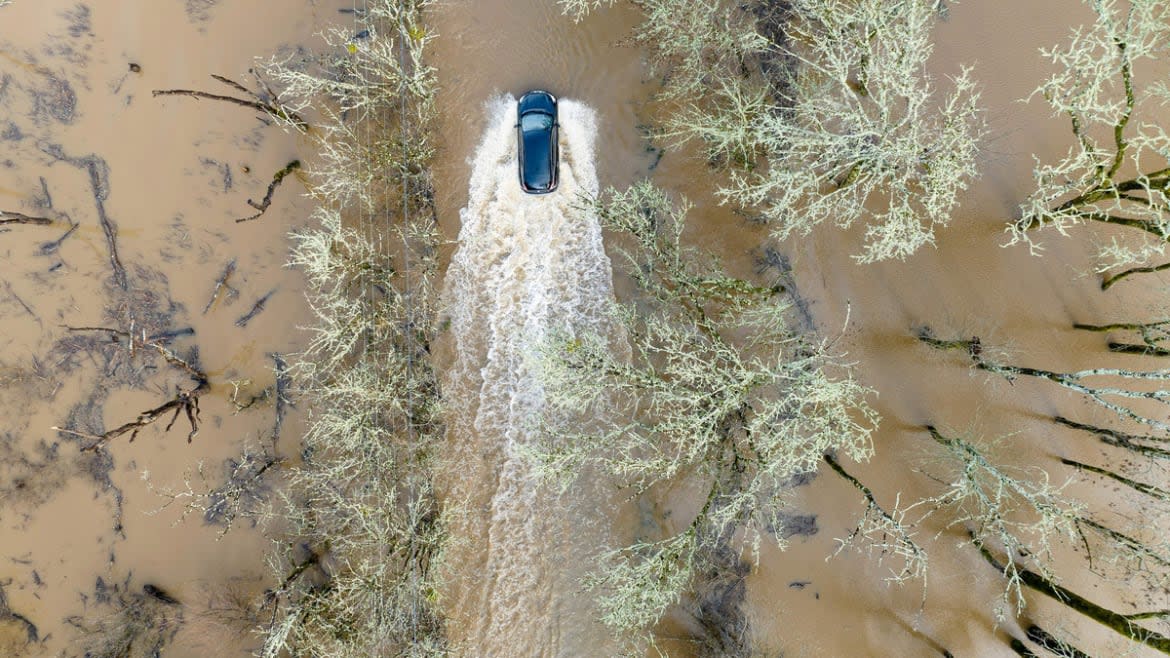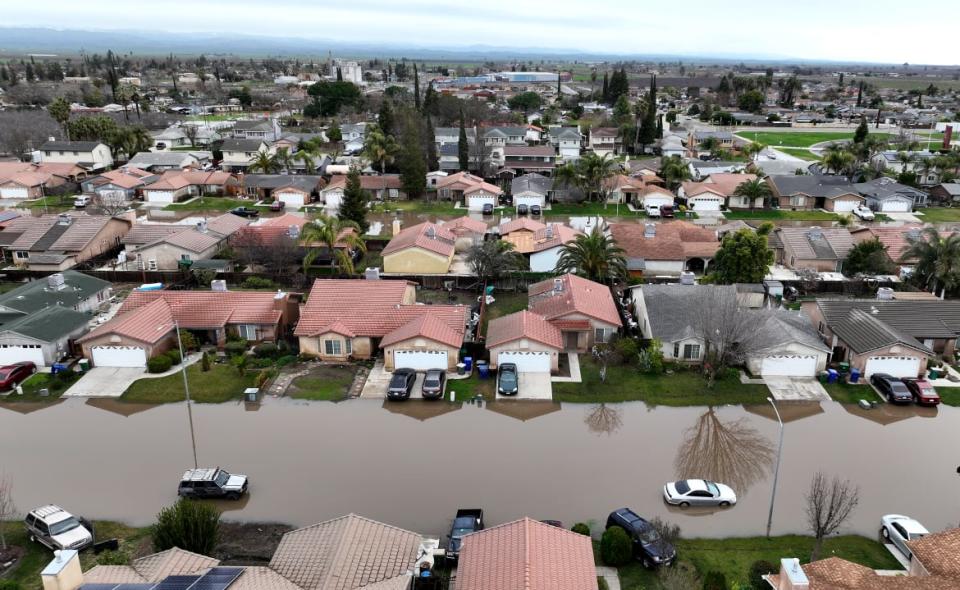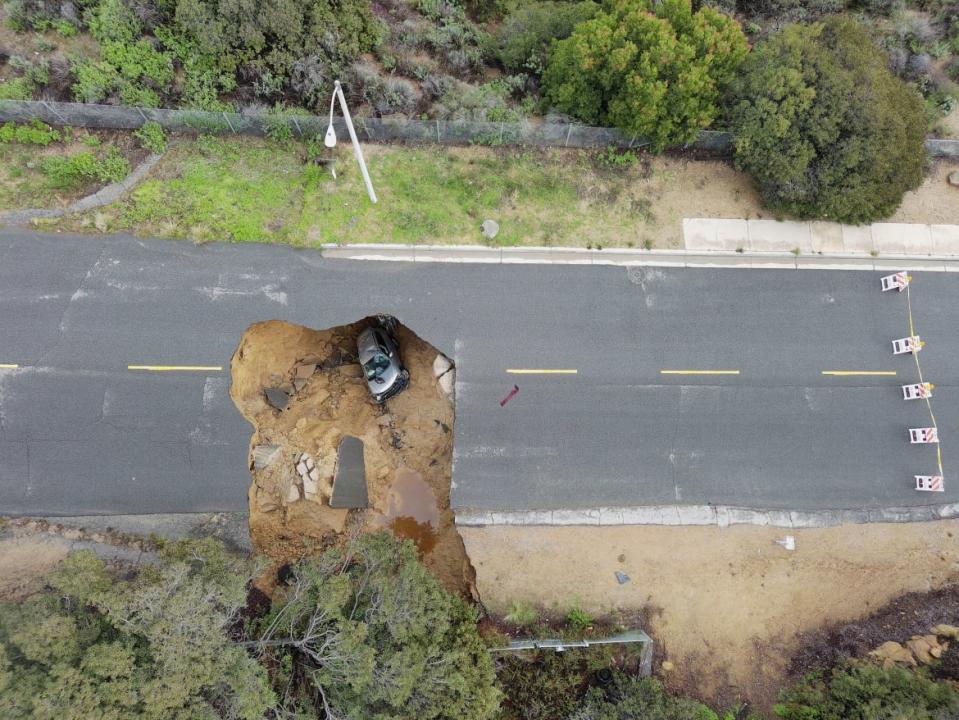Greener Cities Have Little to Fear From Atmospheric Rivers

After weeks of endless rainfall and flooding, the atmospheric river that has lashed California has finally started to roll back. In its wake, the intense weather has caused potentially billions of dollars worth of property damage and the deaths of at least 20 people.
Atmospheric rivers—narrow cloud bands carrying concentrated moisture—aren’t necessarily bad per se. Marty Ralph, a meteorologist and director of the Center for Western Weather and Water Extremes at the Scripps Institute of Oceanography at the University of California, San Diego, told The Daily Beast that ARs are relatively common and even have a positive impact by providing water to drought-stricken regions like California. “The weaker ones tend to be largely beneficial,” Ralph said, adding that some of them could be “important to our water supply for the rest of the year.”
However, this most recent AR has been notable for being much stronger and dangerous than ones in the past for a number of reasons. For one, California experienced several intense ARs one after another, according to Ralph. He also noted that climate change is a contributing factor to its intensity because “as climate change warms the atmosphere, the atmosphere is able to carry more water vapor” which essentially fuels the storm fronts.

In an aerial view, homes are seen surrounded by floodwaters on January 11, 2023 in Planada, California.
In fact, adverse weather events like atmospheric rivers are likely going to get more intense with each passing year. Stopping the rise of global temperatures by reducing greenhouse gas emissions is essential, but the weather is still going to get worse in the near future. How we prepare for it will determine how much damage we sustain—and how many lives we can save.
This is an area where we can kill two birds with one environmentally-conscious stone: green infrastructure, or civic engineering design and systems that help filter and absorb rainwater, where it can be efficiently reused or stored. This can come in a wide range of different forms ranging from personal rain barrels against your home, to resurfacing city streets with permeable pavement, to installing absorbent backyard rain gardens. Urban sustainability measures not only help mitigate the worst impacts of flooding, but also help lessen a city’s climate change impact.
“Unfortunately, infrastructure in the U.S. was designed for yesterday’s stressors, not tomorrow’s threats,” Aaron Deslatte, an assistant professor in the O'Neill School of Public and Environmental Affairs at Indiana University, told The Daily Beast. “We know climate-related weather events we are experiencing today and in the future will continue to be intense and more unpredictable.”

This aerial view shows two cars siting in a large sinkhole that opened during a day of relentless rain, January 10, 2023 in the Chatsworth neighborhood of Los Angeles, California.
That’s why Deslatte and others believe that an investment in green infrastructure is needed in order to help best prepare cities, towns, and communities across the world for the coming onslaught of intensifying weather conditions. This encompasses everything from roads, to bridges, to sewer systems, to buildings, to treatment plants.
More specifically, Deslatte said, there needs to be an emphasis on “resilient infrastructure,” which “has a greater capacity to bounce back from flooding, extreme heat, and other climate-related shocks.” For example, buildings and transportation systems in regions prone to seismic activity like Japan are built to withstand earthquakes and tremors. If they are damaged, they wouldn’t be as damaged as they typically would be if the buildings were built like they were in, say, Des Moines, Iowa.
For green infrastructure proponents, these designs provide a blueprint for how we can approach building cities in the future to fend against climate change.
“This means more green stormwater infrastructure like green roofs, bioretention systems, permeable pavements, urban forests, and vegetative filters,” Ralph said. “These can have the benefit of reproducing the natural flow of stormwater, slowing it down, filtering or retaining it, and lessening some impacts from extreme precipitation.”
WATER, WATER EVERYWHERE
At their core, all of these efforts can be boiled down to one thing: water absorption. Right now, the street outside of your home is likely some sort of manmade asphalt. That material is downright dreadful at soaking up the rain and stormwater. That’s why we have systems of gutters and storm drains to flush that water out of the street and back into the water system. YET even those can fail sometimes resulting in backed-up sewers and a big flood of crap on your street.
But imagine if that same street were made of something more porous like gravel, sand, dirt, or grass. The water wouldn’t flood or pool up as often as it could seep into the ground more easily, and help replenish aquifers. While you can’t replace everything with gravel or grass, there are plenty of green and water friendly building materials out there. Engineers have even created types of porous concrete and asphalt that could potentially be used for city roads and buildings.
This Climate Startup’s Rogue Plan to Manipulate the Weather is Horrifying Scientists
California is an interesting case where resilient and green infrastructure can do double duty in helping protect against both flooding and drought. Since systems like permeable pavements and rain gardens can help soak up water into the ground and prevent it from flooding, it can also help cities store water for future use. In Western states like California that regularly have to deal with droughts in the summer, this could be a huge boon as the rain can more efficiently replenish aquifers.
Currently, the state still has an uphill battle to fight when it comes to using stormwater effectively. The California Department of Water Resources announced on Monday that it was “acting with urgency to capture as much water as it can to help alleviate drought during the dry season” but added that “current infrastructure to move water through the Delta is outdated, vulnerable to earthquakes, and limits the export of water during these long, sustained winter storms.”
DWR is acting with urgency to capture as much water as it can to help alleviate #drought conditions, however current infrastructure to move water through the Delta is outdated, vulnerable to earthquakes, & limits the export of water during these long, sustained winter #storms. pic.twitter.com/knL1t4o9OY
— CA - DWR (@CA_DWR) January 16, 2023
The latest spate of AR-related devastation has added more urgency to building out these new resiliency efforts and overhauling an outdated water system, but they will take time, money, willpower, and cooperation between different levels of government as well as community groups.
Luckily, there’s already some action being taken. “[Cities] in the U.S. are attempting to determine the vulnerability of their infrastructure to both extreme heat and flooding,” Ralph explained. “But most lack the capacity to do a lot about it without federal aid.” He added that federal assistance is coming through via the Infrastructure Investment and Jobs Act and Inflation Reduction Act signed by President Joe Biden, which has helped create or provide resources for more than 70 programs focused on transitioning the country to a green economy.
However, he added that “federal funding isn’t a silver bullet” and that “local governments and developers both play a crucial role in changing development practices and land-use patterns in order to adapt to climate change.” This can help not only in providing better infrastructure to help protect against future storms, but also do so in an equitable way—which is crucial. After all, communities of color are consistently the ones that feel the biggest brunt of climate disaster, while also receiving the least amount of funding or resources to do anything about it.
If we want to build the green cities of tomorrow to guard against climate change, it starts with the communities that are hurting the most from climate change.
“To get started, local communities need to get their planning in order,” Ralph explained. Plans for hazard mitigation, land use, and climate-action are needed to “address the “social and physical vulnerability of neighborhoods in order to be competitive for federal funds and to more wisely use those dollars.”
Got a tip? Send it to The Daily Beast here
Get the Daily Beast's biggest scoops and scandals delivered right to your inbox. Sign up now.
Stay informed and gain unlimited access to the Daily Beast's unmatched reporting. Subscribe now.

